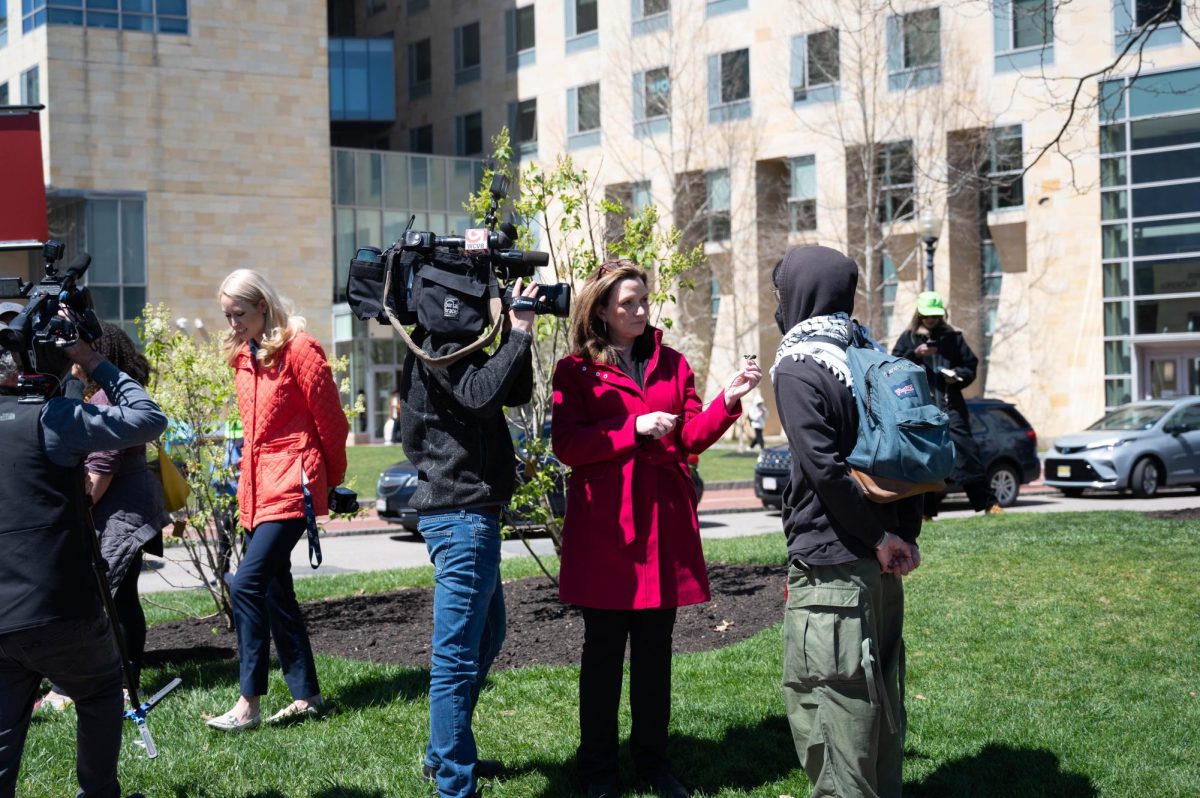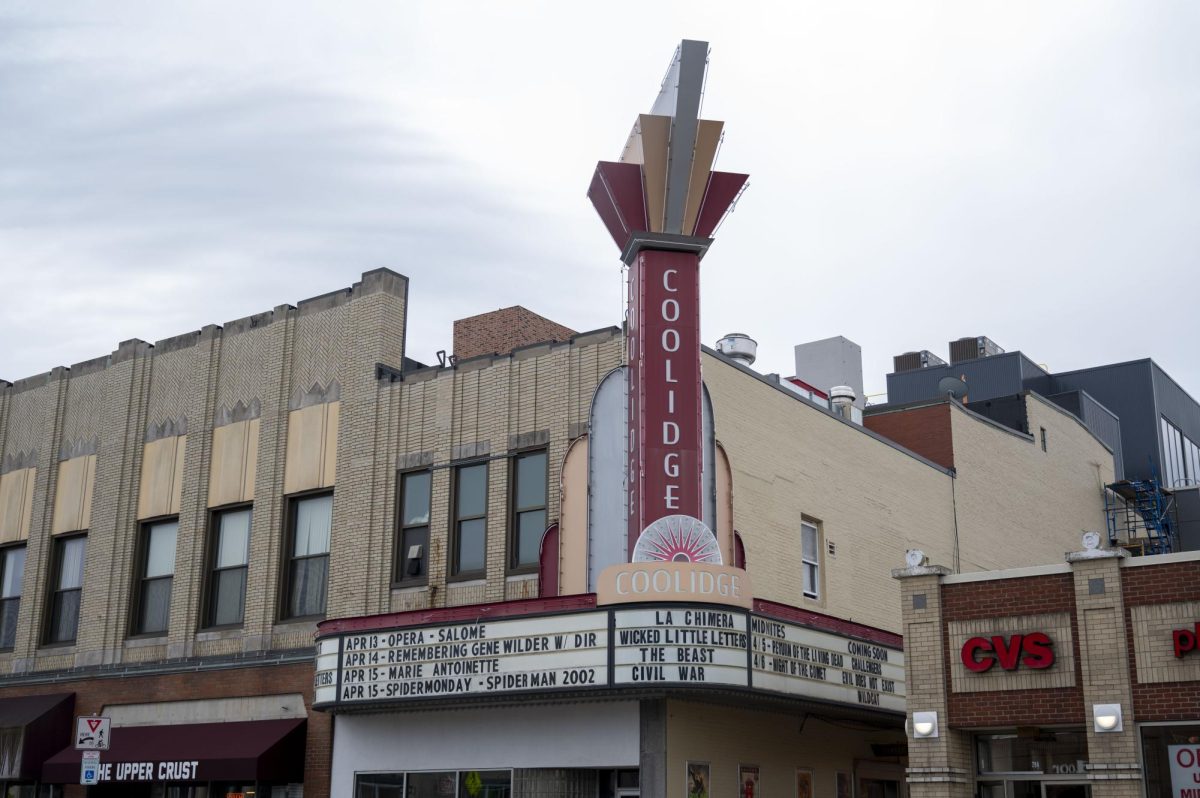
By Monica Cole, News Correspondent
One stage. A tree. Two men. Waiting.
This is the premise of Samuel Beckett’s famous play, “Waiting for Godot.”
The recent Gare St Lazare Players Ireland revival, directed by Judy Hegarty Lovett, closed a one-and-a-half-week run co-commissioned by ArtsEmerson at the Paramount Center Mainstage on Sunday.
The play centers around two men, Vladimir (Conor Lovett, a well-seasoned Beckett actor) and Estragon (Gary Lydon), as they wait by a tree for the arrival of a man named Godot. The two tramps pass the time with nonsensical talk, jumping from one topic to another mid-conversation.
While they wait, a man named Pozzo (Gavan O’Herlihy) and his slave Lucky (Tadhg Murphy) enter, on their way to a market where Pozzo plans to sell Lucky. Lucky entertains the men by dancing for them.
After Lucky and Pozzo leave, a boy (Connor Upton) enters and informs the two waiting men that Godot will not be coming today, but he will come tomorrow. Vladimir and Estragon agree to meet in the same place the next day.
Act II plays out in much the same way. When Pozzo and Lucky return from the market, Pozzo is now blind and Lucky is dumb. Pozzo has no memory of meeting Vladimir and Estragon the day before.
Again the boy enters after Lucky and Pozzo leave. Again he informs Vladimir and Estragon that Godot will come tomorrow instead. The boy also does not recognize the men or remember talking to them the day before. Vladimir and Estragon agree to return the next day in the hope that Godot will finally come.
The set is bare, save for a small tree onstage that sprouts leaves in the second act. The Gare St Lazare Players production also featured a huge circular platform with the face of the moon on it that filled most of the stage and was where the action of the play took place.
In 1956 in The Irish Times, Vivian Mercier, an Irish literary critic, famously described “Waiting for Godot” as “a play in which nothing happens, twice.”
But Beckett’s piece was groundbreaking for its time, and is considered his best piece.
Under the direction of Roger Blin, the play premiered in 1953 in Paris, France, to an audience of dumbfounded Frenchmen. No one had ever seen absurdist theatre in all of its full-fledged glory before.
Never had such random nonsense been portrayed onstage, and in such a way that it kept audiences engaged and entertained. With “Waiting for Godot,” Samuel Beckett was able to do what no playwright before him ever had. He made the mundane interesting.
The play had its English language premiere in 1955 at the Arts Theatre in London, directed by Peter Hall. Though it was initially not as well received as it was in France, England eventually came around and embraced the existential drama.
A complete literary paradox in its own right, “Waiting for Godot,” has no real plot. It ends as it starts, but the play stuck with audiences who had never seen anything like it.
A co-production of the Dublin Theatre Festival, this production of “Waiting for Godot” premiered at The Gaiety Theatre in Dublin, Ireland on Oct. 2, where performances ran until Oct. 6. From Oct. 21 – 23, the play moved on to The Lyric Theatre for Belfast Festival at Queens in Belfast, Ireland. The tour made its final stop in Boston at the Paramount Center.
The production was met with rave reviews wherever it went. Who better to stage Beckett’s most monumental work than a theatre company from the playwright’s own native country?
The Gare St Lazare Players Ireland come well-equipped to handle Beckett’s work, with a repertory that includes 17 Beckett titles already, according to the company’s website.
Judy Hegarty Lovett dissects the script and rebuilds it, giving a conversational flow to the nonsense being spewed onstage. Lovett, a Beckett aficionado in his own right, having already performed 17 different roles in 23 different Beckett productions internationally, brings a lightness and humor to the sparse and darkly-lit stage, capturing audiences while doing little.
Lydon proves to be the perfect counterpart in this well-balanced duo, and the two go through the cycle of waiting for their man in a most hilarious way, two times. With great success.
Enter O’Herlihy and Murphy, who, despite O’Herlihy’s overactive “theatre voice,” play well as master and servant. O’Herlihy plays Pozzo’s transition from powerful slave master to helpless blind man beautifully, and Murphy’s performance of Lucky’s thinking monologue is impeccable.
The show feels like a dark comedic daydream, twisting in and out of absurdity and clarity, confusing the audience but forcing them to pay attention. This leaves them with an ending that is both predictable and unexpected at the same time.
In New York, Ian McKellen and Patrick Stewart star in another revival of “Waiting for Godot,” set to open on Nov. 24. They are doing hand-in-hand with performances of Harold Pinter’s “No Man’s Land.” Both plays are currently in previews.
Next up for ArtsEmerson is a production of “Sleeping Beauty” that opened at The Paramount Center Mainstage on Nov. 13 and will run until Nov. 17. Tickets can be purchased online at artsemerson.org.













